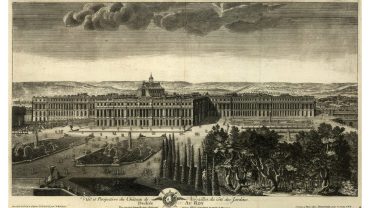The Beale ciphers stand out as a perplexing riddle that has captivated the imaginations of treasure hunters, cryptanalysts, conspiracy enthusiasts and even the US military for over a century. All have tried to crack the code and all have, so far, failed.
At the core of this fascinating story lies the Beale papers, a trio of encoded numerical messages, allegedly revealing the location of a vast buried treasure of untold riches somewhere in Bedford County, Virginia.
The second of the Beale ciphers, the one disclosing the contents of the treasure trove, has been cracked. The first and third, supposedly revealing the location, as well as the names of the owners of the treasure and their next of kin, remains tantalisingly out of reach, two centuries after the box was left with an unassuming innkeeper in Lynchburg, Virginia.
For those who believe the authenticity of the Beale cipher mystery, somewhere in southwestern Virginia lies tens of millions of dollars worth of treasure. But is this the truth or a complex charade?
For almost a century and a half, the treasure hunt of all treasure hunts has baffled the world. Who created the Beale ciphers? Who was Thomas Beale? Treasure hunter, adventurer, enigma? Is there treasure out there waiting to be discovered, or is it an elaborate nineteenth century hoax?
The mystery of the Beale treasure is one that has left the world perplexed since the end of the nineteenth century. Here’s a dive into the Blue Ridge Mountains of Virginia in an attempt to shed light on a truly baffling mystery.
Decoding the Past
The tale of the Beale ciphers begins around 1820 with the enigmatic figure of Thomas J. Beale, a man whose existence, much like the treasure he supposedly hid, remains shrouded in uncertainty. According to an anonymously-written 1885 pamphlet – when the story first came to light – Beale and a group of adventurers stumbled upon a treasure trove out west, comprising gold, silver, and jewels. They brought it back to Virginia and buried it. In an act of profound trust or perhaps extreme paranoia, Beale encoded the location and details of this treasure into numeric ciphertexts, entrusting them to an innkeeper in Virginia.
According to a contemporary report by the innkeeper, a Mr Robert Morriss, Beale told him in 1822 that the box contained ‘papers of value and importance’. Beale is also alleged to have told Morriss that if he, or any associate of his, didn’t return within ten years, Morriss should open the box.
According to The Beale Papers pamphlet, Beale told Morriss that he’d send him the key to decipher the codes in a letter that would be mailed from St. Louis. The letter never arrived. Was it ever sent? The contents of that letter may have solved the riddle of the Beale ciphers once and for all.
In fact Morriss didn’t open the box until 1845, some twenty-three years after he was entrusted with it. He spent the next two decades attempting to decipher the messages without success. Morriss had no experience in cryptography, and despite his best efforts, the codes remained a mystery. Realising he couldn’t solve the Beale ciphers himself and with advancing age, Morriss confided in a friend (an unnamed figure in the narrative) and handed over the clues to the Beale treasure in the hope that this individual might have better luck.
He had much better luck.
The Most Famous Treasure in the World?

Gold coins amongst other treasure. (Credit: brightstars via Getty Images)
The key to solving the second of the three ciphertexts lay in the Declaration of Independence. Via an oddly circuitous route, the unnamed individual decided the middle name of the mysterious Thomas J. Beale was Jefferson, and as President Thomas Jefferson was one of the main authors of the document, the Declaration of Independence must be the Beale cipher key. This in itself raises more questions than it answers.
Regardless, he was, somehow, correct. In fact each number on the second code corresponded with the first letter of a word in the famous document and the plaintext translation of the second of the Beale ciphers is as follows –
I have deposited in the county of Bedford, about four miles from Buford’s, in an excavation or vault, six feet below the surface of the ground, the following articles, belonging jointly to the parties whose names are given in number three, herewith:
The first deposit consisted of ten hundred and fourteen pounds of gold, and thirty-eight hundred and twelve pounds of silver, deposited Nov. eighteen nineteen. The second was made Dec. eighteen twenty-one, and consisted of nineteen hundred and seven pounds of gold, and twelve hundred and eighty-eight of silver; also jewels, obtained in St. Louis in exchange to save transportation, and valued at thirteen thousand dollars.
The above is securely packed in iron pots, with iron covers. The vault is roughly lined with stone, and the vessels rest on solid stone, and are covered with others. Paper number one describes the exact locality of the vault, so that no difficulty will be had in finding it.
Unfortunately, using the Declaration of Independence as the Beale cipher key for codes one and three proved fruitless.
From amateur metal detectorists to some of the world’s pre-eminent cryptanalysts, thousands of people have tried to break the code and locate the Beale treasure. So far, none have been successful. At least no-one has admitted to it.
It’s All in the Numbers
Due to its enduring and unsolved nature, the Beale ciphers mystery has generated several theories over the years.
The Story is True
Some believe that the Beale papers are genuine and that a vast treasure, as described in the deciphered second cipher, is indeed buried somewhere in Bedford County, Virginia. These enthusiasts and treasure hunters maintain that the ciphers, once fully decoded, will lead to the exact location.
An Elaborate Hoax
Sceptics argue that the entire Beale ciphers narrative is an elaborate hoax or riddle. They point to the lack of corroborative historical evidence for Thomas J. Beale’s existence or any record of such a significant treasure being transported and buried. Indeed historians and researchers have never been able to conclusively prove the existence of Thomas Beale.
A Money Making Scheme
Given that the 1885 pamphlet is the primary source for the entire story, some speculate that the tale, nothing more than a well-spun yarn, was a fabrication intended to boost sales of the pamphlet itself. Costing fifty cents, the full title of the pamphlet is ‘The Beale Papers, Containing Authentic Statements Regarding The Treasure Buried 1819 And 1821 Near Bufords, In Bedford County, Virginia, And Which Has Never Been Recovered.’

Read More About: Mysteries
The Curse of Oak Island and the Oak Island Treasure Mystery
An Unsophisticated Code
Another theory posits that the remaining unsolved ciphers might be based on an original, unsophisticated code or a misinterpretation of the coding system. If true, this would make traditional decryption attempts impossible.
The Lost Beale Cipher Key
The narrative suggests that Morriss never received the promised key to the ciphers from Beale. Some theorise that without it, the ciphers might remain forever undecipherable.
Must Read
A Thoroughly Modern Hoax
Some researchers believe that the Beale ciphers and the story around them were created in the nineteenth century as a hoax or a form of entertainment. This theory points to linguistic and historical inconsistencies in the documents as evidence.
A Hidden Message
Some cryptanalysts, while acknowledging the possibility of a hoax, believe there might be a hidden message or moral lesson embedded within the ciphers, intended to be unveiled rather than containing instructions to find a hoard of physical treasure.
Buried Truths: The Continuing Quest for the Beale Treasure
The Beale ciphers have intrigued historians, cryptanalysts, and treasure hunters with their mesmerising blend of buried treasure, coded messages, and the spectral figure of Thomas J. Beale.
At the heart of this narrative lies the age-old quest for discovery and the allure of hidden riches. Yet, despite the unwavering dedication of countless enthusiasts, the mystery endures, shrouded in layers of speculation, hope, and scepticism.
As the pages of time continue to turn, the legend of the Beale ciphers remains a perplexing chapter in the annals of American folklore.












